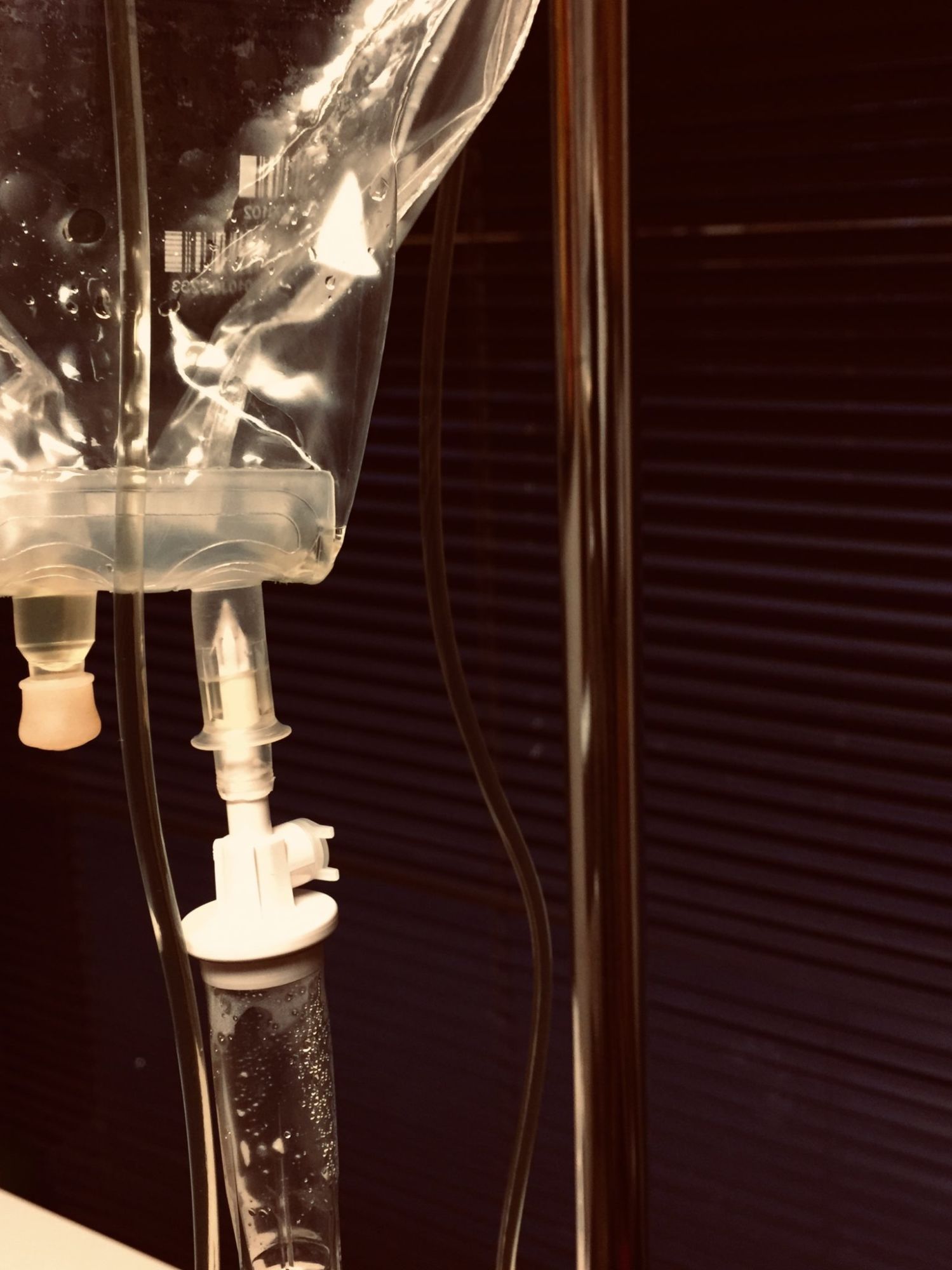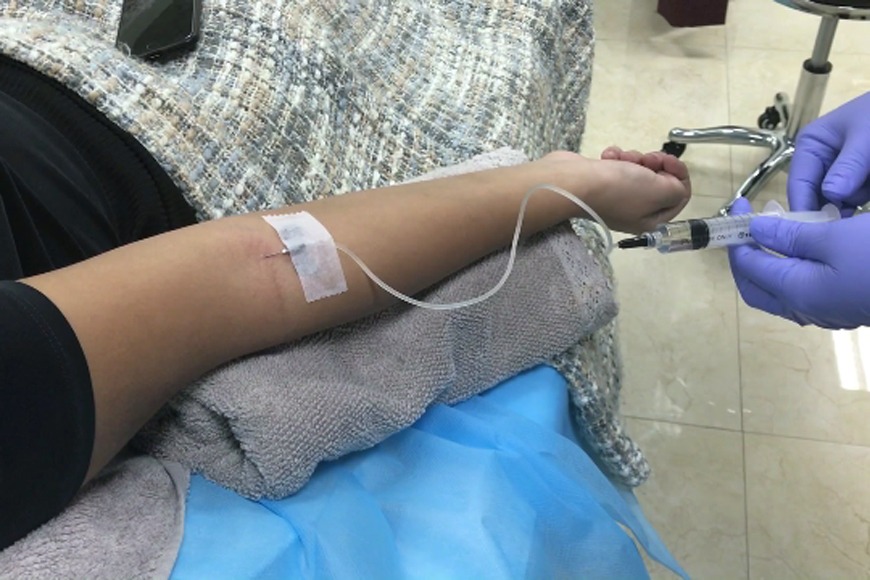
$238.80 for the first pass and $27 for each consecutive pass.
MAH vs OHT
The Sound Clinic offers two different methods of systemic ozone administration. The more common of the two is called Major Autohemotherapy (MAH). The newer version goes by several names including Ozone High-Dose Therapy (OHT), Hyperbaric Ozone Therapy (HBO3 or HBO3T), or simply ‘10-pass’ ozone therapy. This is best described as a more potent variation of MAH. Both procedures involve removing of blood from the body, ozonating it, and then returning it to circulation.
We have been pleased overall with the results of MAH, but also feel that it is often impractical and/or not economical to complete number of treatments necessary to maximize the therapeutic potential of the modality. The OHT machine is able to overcome this limitation because it makes it possible to deliver much more ozone to the blood in a given amount of time. It creates a vacuum that facilitates blood extraction and pressure that expedites the re-infusion of ozonated blood. The pressure that it can generate also creates a hyperbaric effect that enhances ozone delivery to the blood.
We estimate that an OHT treatment (in which about 2L of blood is ozonated over the course of up to ten consecutive 200cc ‘passes,’ delivers 30-60 times as much ozone as a single MAH treatment. Treatments last about 90 minutes on average. Some clinics routinely administer 10 passes daily for weeks but we usually recommend just one treatment per week for 4 to 8 consecutive weeks.
To our knowledge, there is no head-to-head data comparing MAH to OHT. Since ozone isn’t patentable, there’s little money for research and, accordingly, we don’t expect there to be any serious scientific publications in the foreseeable future. But it stands to reason that treatment benefits achieved through the use of MAH should be attainable more quickly and/or after fewer treatments using OHT. Since little is known about the ‘ceiling’ of benefit from the medical use of ozone, it’s likely that OHT is capable of delivering outcomes that MAH cannot.
A collection of articles on the medical use of ozone is available from http://www.zotero.org/groups/isco3_ozone. The leading proponent for OHT in the United States in Robert Rowen, MD. We’re not sure he’s an ideal ambassador but some patients may find postings on his YouTube channel to be informative.
The cost is $238.80 for the first pass and $27 for each consecutive pass, for a maximum of $481.80 for a full treatment. Sometimes blood clots form in the tubing, which necessitate that it be replaced. Our experience and that of others has been that there is a tipping point of sorts after about 6 passes, perhaps because stem cells are activated after that much ozone has been administered. For that reason we typically replace the tubing if it clots after less than passes and discontinue treatment if it happens after 6 or more passes. The cost is not recoverable from insurance but flexible and/or health savings accounts should reimburse the patient for any procedure prescribed by a physician.
Locations Offering This Service:
More Therapies
Myers’ Cocktail / Myers’ Plus
This IV nutritional drip can be customized but typically includes magnesium, zinc, [...]
Glutathione Push
Glutathione is thought of as the body’s master antioxidant molecule. Used-up (‘reduced’) glutathione is a marker for cellular toxicity. [...]

